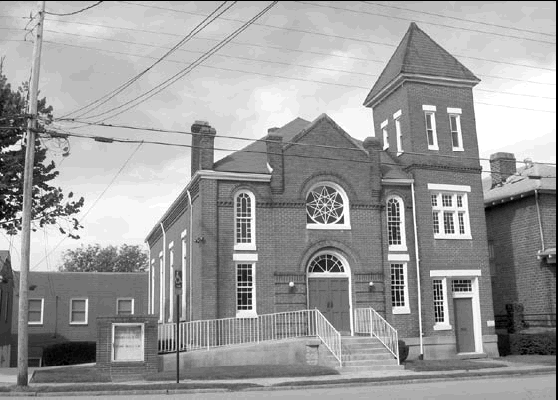
In 1878, Danville’s first African-American Presbyterians formed the congregation known today as Holbrook Street Presbyterian Church. Members organized at the True Friends of Charity lodge on Patton Street across from the town’s old court house, now occupied by the city’s Municipal Building. The True Friends’ work as a force to help African-Americans—widows, orphans and others in need—made its quarters a ready meeting place for African-American citizens from the time the lodge emerged just after the Civil War and for decades to follow.
Within a few years the newly-constituted Presbyterian congregation purchased property for a church on Holbrook Street, then emerging as the leading address for Danville’s upwardly-mobile African Americans. Here they constructed a white frame edifice. Their vision however was greater than just their first church that occupied part of a large lot. Recognizing the importance of education—spiritual training within the walls of the church and achievement beyond those walls—the Holbrook Street congregation built an “Industrial High School” next to the church. The church launched this mission in 1885, offering basic and Christian education to African-American children, some of whose opportunities for advancement were limited by prejudice and “separate but unequal” doctrines that became codified in the Jim Crow laws of the 1890s.
For nearly the church’s first half-century the school was integral to church life and mission, with a number of early pastors serving both church and school. Early tuition was 25 cents a week, with enrollment open to students of all denominations. By 1923-24, the school added the 12th grade—providing a full complement of departments from primary through secondary. The Holbrook Street Presbyterian School as it was often called, ended in 1929 when fire destroyed the building. By that time generations of graduates, including ministers, teachers, principals, administrators, and other productive citizens from all walks of life, could attest to the importance of its educational opportunities.
The cornerstone of the present brick edifice of Romanesque inspiration was laid on March 28, 1910. Members and friends of the church gave unstintingly of their time, labor, and talents as brick masons, roofers, and carpenters to lay up its walls and tower, sheath its roof in gray slate, and install millwork, windows and pews. Most of these original features remain as hallmarks of this much-loved landmark today.